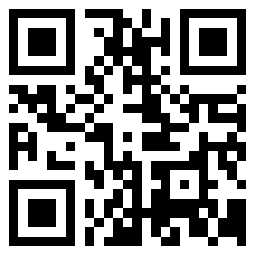
Medical equipment sector is a sunrise industry in the pharmaceutical industry, while China is also the world's second largest medical equipment consumer market, but from the point of view of equipment consumption, China is only 40% of developed countries. From the perspective of industrial structure, China is in the middle and low end of the global industrial chain. Under the policy guidance, along with the technical breakthrough and the use popularization of the domestic high-end products, the long term investment logic of our country's medical equipment import substitution will continue to exist.
From the two market performance, the current medical equipment sector valuation in the past 3 years in the history of low areas. From the industry perspective, in recent years the leading medical device companies to achieve technological breakthroughs, to honor the results uncertainty is high, more factors and control health care costs for domestic medical equipment selection and procurement of medical equipment sector, with high investment value at the present time.
The CITIC Securities
Medical instruments refer to instruments, equipment and materials used directly or indirectly for the human body, including the necessary software. In 2015 the global medical devices market size of about $371 billion, according to the forecast, from 2017 to 2022 is expected to maintain an average annual growth rate of 5.2%, and reached the scale of nearly $530 billion, which, in vitro diagnostic cardiology and diagnostic imaging market size for the top three in the field.
China is the world's second largest medical device market after the United States. In 2015, the scale of the domestic market exceeded 300 billion yuan, accounting for 8% of the global market scale. The medical equipment is the fastest growing segment of the pharmaceutical industry, according to IMS data, the compound growth rate of the global medical device industry is about 6%, the Asia Pacific market growth rate of about 10%, the market size in the range of $55 billion to $60 billion, while China has become the medical equipment market in the Asia Pacific region's fastest growing countries. The compound growth rate of 21.91% in the past 3 years, the next 5 years is expected to still maintain an average annual growth rate of about 18% to 15%.
At present, the domestic medical device sales terminal about 70% from the hospital market, retail and electricity supplier channels accounted for 30%. Due to the lack of related basic disciplines and manufacturing processes, China's medical equipment industry is still concentrated in the low-end varieties, high-end medical equipment mainly rely on imports. From the point of view of the consumption structure of medical devices, medical imaging, in vitro diagnosis, consumables (including low value and high value) accounted for the highest, and cardiovascular, Department of orthopedics and other high value consumables represented in the higher growth phase. Overall, in the field of medical imaging, CT, nuclear magnetic resonance and ultrasound imaging field occupy 60% of the market share, the domestic enterprises in the low-end products, the market share between 10% and 20%; in the field of in vitro diagnostics, foreign enterprises due to its technical advantages and &ldquo equipment; &rdquo reagent +; closed system strategy still, occupy the domestic in vitro diagnostic in the high-end market.
The high-end medical devices including CT, NMR and other large medical equipment, and artificial joint, crystal, pacemaker, stents, heart valve and other polymer materials, a single product of high value, complex manufacturing process, stability of quality and function with high requirements. In China, when some medical devices (especially consumables) for doctors and patients after approval, will be significantly decreased through this channel or the same brand sales supporting devices and instruments, most use of barriers, maintenance, upgrade products require manufacturers or distributors continue to provide services, and medical devices the brand and channel has a common strong and exclusive. In addition, the regulatory authorities in the face of III high-risk medical equipment regulatory requirements higher, product registration, listing costs.
Middle and high-end medical instruments still rely on imports, but our country is still in the low-end part of the industrial chain. The overall level of China's medical equipment is about 10 to 15 years from the international advanced level, and the import and export of high-end products and key components mainly depend on imports. According to customs statistics, in 2015 China's medical equipment exports $21 billion 170 million, imports amounted to $17 billion 319 million, export products, medical catheter intubation and massage apparatus and absorbent cotton and gauze bandage, the highest amount of imported products, to high-end large medical equipment and consumables. In addition, in China's medical equipment import and export market, about 30% to 40% of the products or the main components in Chinese production, first exported to overseas imported to China sales, mainly responsible for the domestic industry chain low value-added sectors, the core technology and profit link still lies in multinational enterprises the hands.
The overall market concentration is low, and the Yangtze River Delta and the Pearl River Delta have begun to cluster. There are more than 1.4 medical equipment manufacturers in our country, more than 90% are small and medium-sized enterprises with a scale of less than 20 million yuan. The enterprises with annual output value of over 100 million yuan are only about 300 to 400, and the industry concentration is low. The number of enterprises from the production perspective, III medical devices enterprises with certain technical barriers accounted for only 15% to 17%, because the industry is a typical capital intensive and technology intensive industries, small and scattered enterprises to bear the costs and promote the development pattern of pressure, lead to weak research and development enterprises, industrial cluster is not effective form. At present, in the policy guidance and local industrial capital, manufacturing industry, China's Yangtze River Delta, Pearl River Delta has a certain scale basis and technical advantages, but compared with the overseas industrial agglomeration level there is still a large gap.

